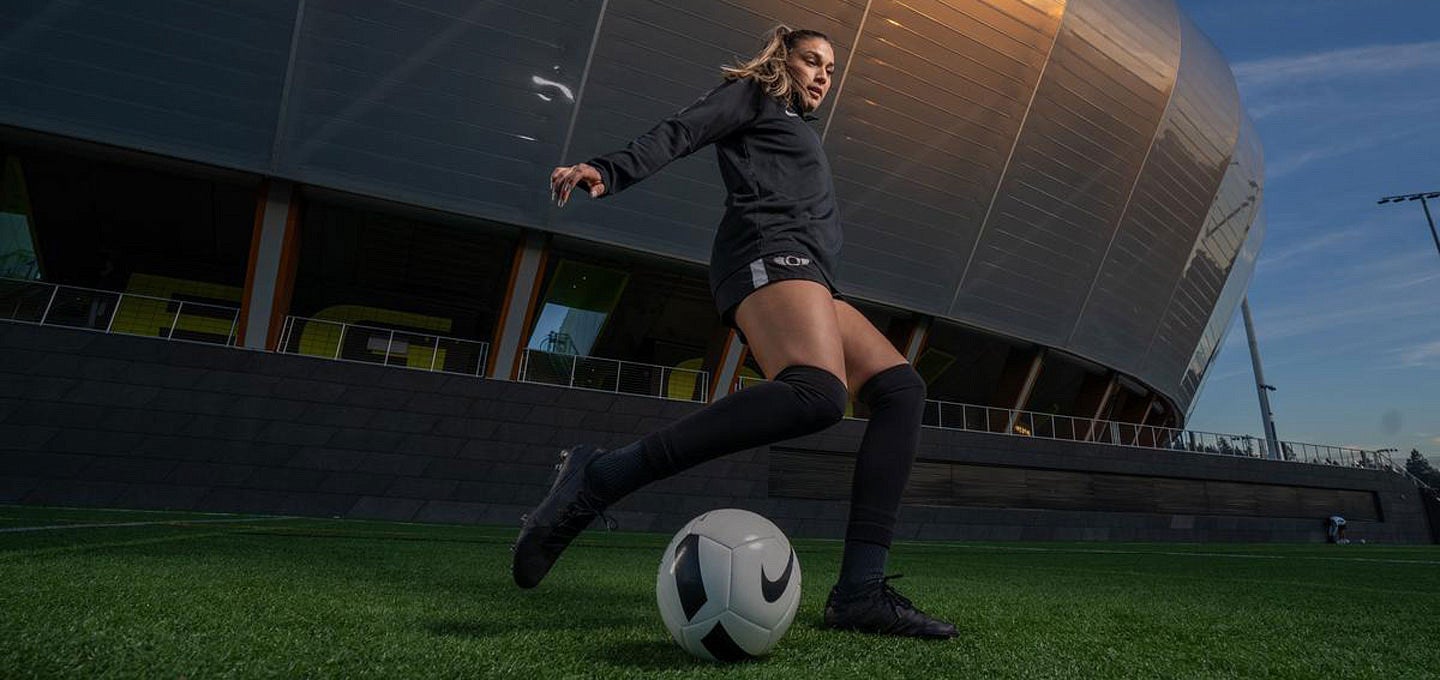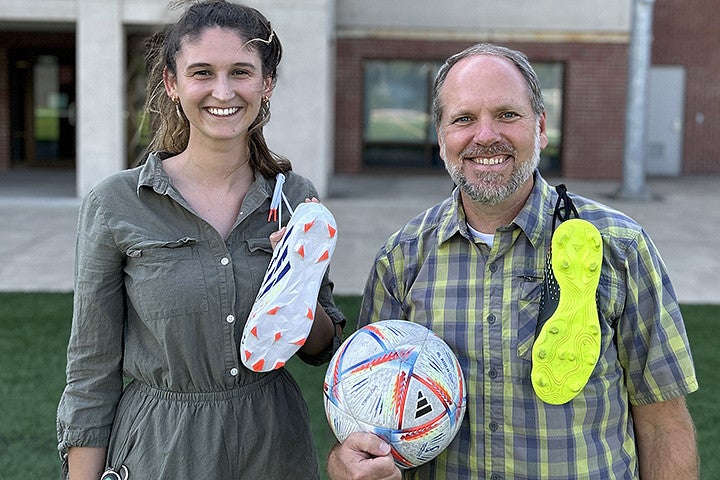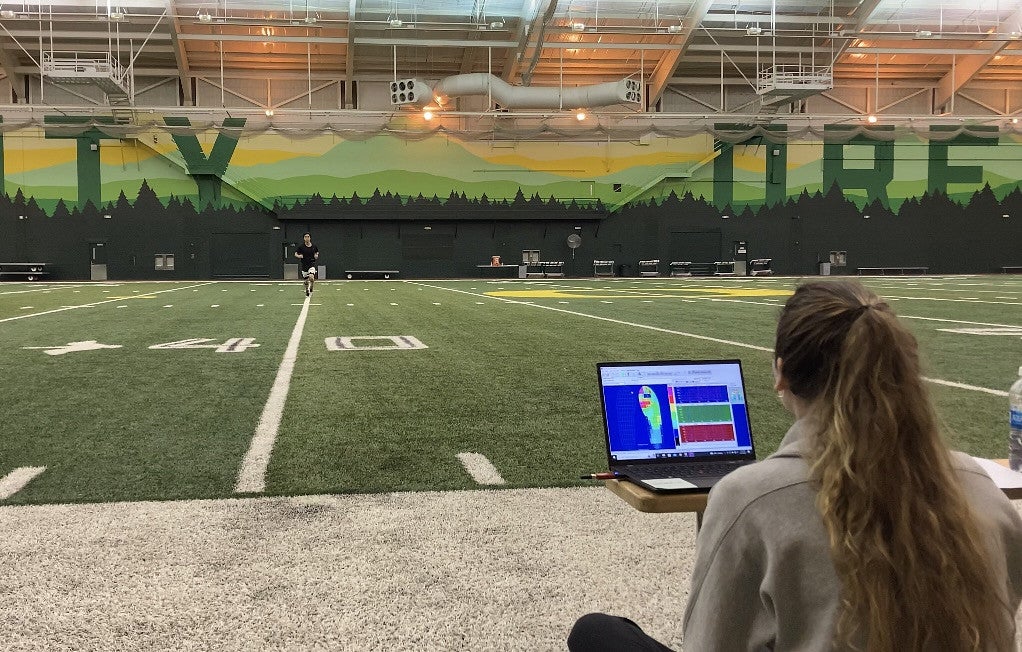
New Wu Tsai Human Performance Alliance at Oregon research tackles the problem of ACL tears disproportionately affecting female athletes in soccer

At the height of the FIFA Women’s World Cup, media coverage drew attention to talented female soccer players both on, and unfortunately, off the pitch. One of the big stories that came out of the World Cup this year was the prevalence of ACL tears, which are estimated to have kept over 25 of the world’s top female soccer players on the sidelines. In fact, ACL tears disproportionately affect female athletes – at a rate three times higher than male soccer players.
Emily Karolidis, a Ph.D. student studying footwear biomechanics out of the Bowerman Sports Science Center, is attempting to address this injury plaguing female soccer athletes. In affiliation with the Wu Tsai Human Performance Alliance at Oregon, Karolidis’ research looks to performance footwear as a potential avenue to reduce injury risk.
“Historically, female athletes must wear cleated footwear designed for and validated according to male mechanics," Karolidis said. "Given the anatomical, physiological, and mechanical differences between sex, is it reasonable to assume female bodies can withstand the same amount of traction as males? We think not.”
Under her advisor, Michael Hahn, the Director of the Bowerman Sports Science Center, and a Knight Campus affiliated professor, Karolidis’ dissertation research looks to identify soccer cleat traction properties that reduce the risk of torsional injury in female athletes. This research garnered interest from industry, where her study entitled “Changes in knee mechanics with systemic fatigue and soccer cleat stud shape appear to differ by sex” was selected as a finalist for the biannual Nike Footwear Research Award, presented at the Footwear Biomechanics Symposium in Osaka, Japan. Interim findings from this research project suggest that soccer cleat stud shape could moderate the risk of torsional injury in female athletes.
Karolidis is optimistic about the future in this research space.
“We, in biomechanics and sports product design, have a long way to go to get female innovation standards to be on par with males," she said. "Our team is proud to start moving the needle on this, challenging the norms to better support our female athletes."
On a similar note, Hahn is happy about where things are headed.
“We need more scientists addressing female athlete research questions specifically," Hahn said. "Emily represents the next generation of human performance researchers, directly shaping the future of footwear biomechanics and product design.”
This study was financially supported by the Wu Tsai Human Performance Alliance and the Joe and Clara Tsai Foundation.

“We, in biomechanics and sports product design, have a long way to go to get female innovation standards to be on par with males. Our team is proud to start moving the needle on this, challenging the norms to better support our female athletes.”
— Emily Karolidis, a PhD student studying footwear biomechanics in affiliation with the Wu Tsai Human Performance Alliance at Oregon
